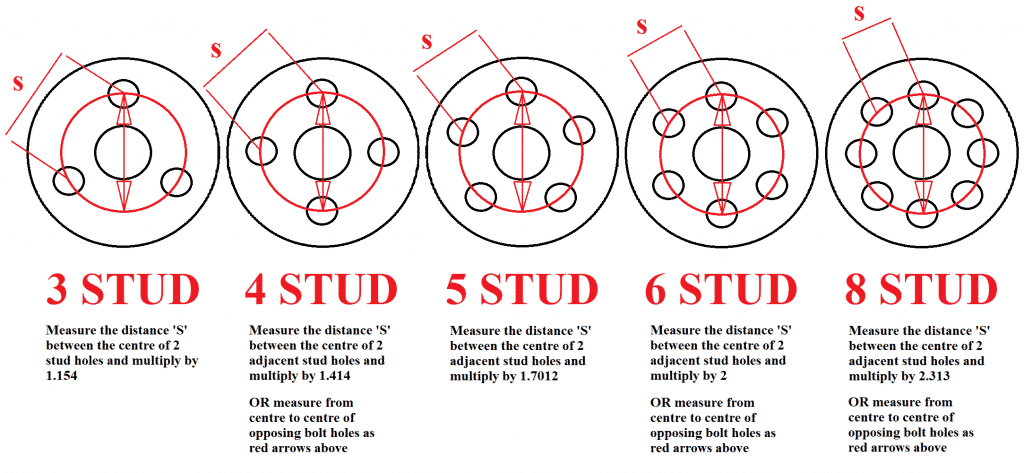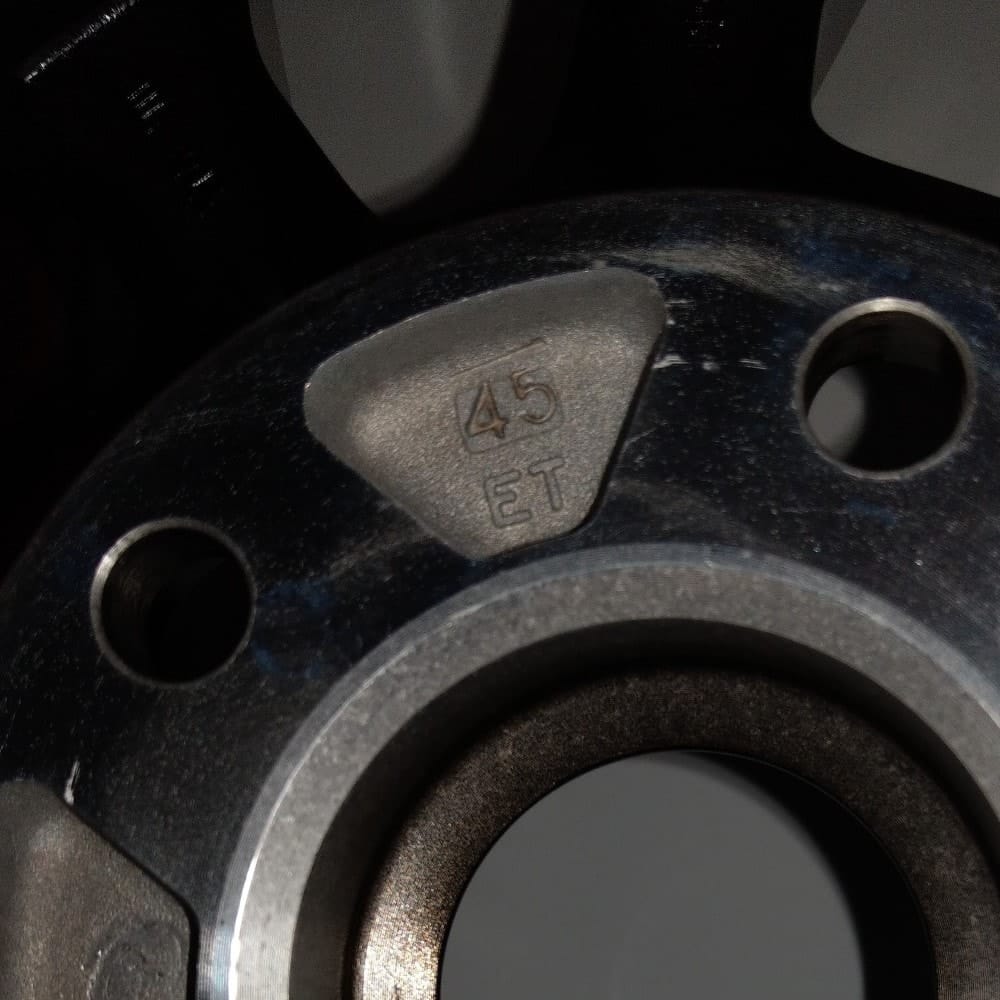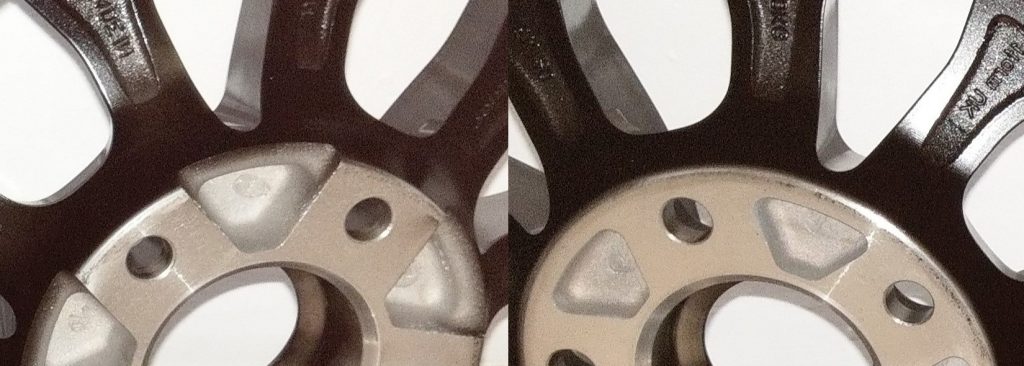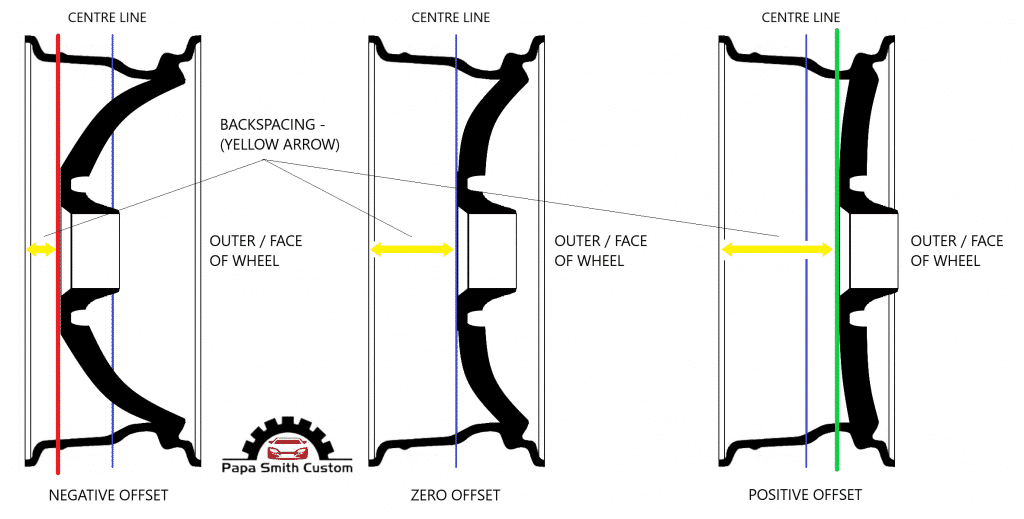Alloy Wheel Fitment Guide
The only alloy wheel fitting guide or wheel size guide you will ever need for your car, van or commercial vehicle.
The world of car modification and alloy wheel fitment is more complicated than it seems at first. After all, wheels and tyres are what connects you to the road (hopefully safely). There’s plenty to consider about wheels, as it really is one of the most important things you can buy for your car. Perhaps you just want to replace your existing damaged wheels for something similar. Maybe you fancy a complete change of look for the car or even something to improve vehicle performance? So an alloy wheel fitting guide would help, yes? Well look no further, we have an Alloy Wheel Fitment Guide to help you make the best choice in rims. Wheels that are best for YOUR car. At Papa Smith Custom, we’re nice like that.
If you like this guide because it has helped you and want to see more guides like this in the future you can buy us a coffee. https://ko-fi.com/papasmithcustom
If you are looking for tyre load or speed ratings, please see our separate tyre guide.
I need help with wheel fitment!
There are so many Alloy Wheel related questions aren’t there? What is PCD? What is offset? Scrub radius? How can I stance a car? Well fret no longer, this alloy wheel fitment guide will help you along the way!
Alloy Wheel Fitment Guide: What wheels can fit my car?
Please Note: This first tool below, is for Original Equipment Manufacturer (OEM) wheels. This is the standard specification and size wheels fitted to your vehicle. Of course there are many more sizes that you can fit to cars, but this is the baseline fitment to work from and a size there should be absolutely no problem at all in the fitting. For larger and smaller wheels read further below.
Do you know the best alloy wheel fitment for your vehicle?
Which wheels will fit?
When browsing alloy wheels on our site, you may be surprised by all the different fitment options available. Depending on the choice of wheel, there can often be over 50 fitment variations, in just one wheel! With so many different options available, there’s no simple way to show you everything available. This is especially true if you consider you can fit various wheels using variation nuts and bolts. Spacers can change the pcd of a car also, and some people even change the hubs on the car! So, you want to learn more about wheel fitments, right? Then keep reading this alloy wheel fitment guide!
Firstly, you can check the standard manufacturer’s vehicle fitment using the wheel fitment menu as above. You can search by vehicle, tyre size (or tire depending on where you live), and by rim size. If in rare cases your vehicle is not listed, please see the hub diagram further below. This will show how to measure up your vehicle fitment for yourself.
Secondly, once you have your fitment details, you can then search for wheels by size, fitment PCD or by alloy wheel brand.
Not only that, but you can also search using tags, so, you can just search by various criteria. For example, wheel colour, lightweight/motorsport rims or just for wheels with a polished finish.
No matter what your choice of alloy wheel is, we can get tyres for pretty much any vehicle!
Occasionally, alloy wheel fitment guide data may not be available in the checker tool above, which leads us on to the next section:
Alloy Wheel Fitment Guide: Measuring PCD yourself: 3, 4, 5 6 and 8 stud hubs
How to measure Alloy Wheel Pitch Circle Diameter (PCD)

When buying wheels, the Pitch Circle Diameter is equally important to the number of studs on the vehicle hubs. The RED CIRCLE as in the diagram above is the true Pitch Circle Diameter (PCD), and what you need to know when buying new wheels.
The PCD (for example 5×112) can be stamped on the rear of the wheel, however, this isn’t always the case. On old wheels you are replacing, the stamp may have become damaged or worn.
Once you have your pcd measurement, and if you are going for wheels the same size as before, then feel free to browse our shop.
Changing Wheel Size, Plus Sizing and Minus Sizing.
Usually, the first thing people think about when choosing a set of wheels is the style of wheel. The second thing tends to be the actual size of the wheels. In more recent times, wheel sizes have been getting larger, and often sizes that were considered to be a big wheel in the past is pretty much an average size now. In some cases, those wheels might even be considered small.
Think back to those old times when so many were driving around in Mk2 Astra GTE’s and Escort RS Turbos. Those cars were often upgraded to a 15-inch wheel from a 14-inch size Original Equipment wheel (Plus One Sizing). A 15-inch wheel now you will usually only see on small cars like a Nissan Micra or similar. Even something like a Suzuki Swift Sport you will now see on a 17-inch rim from the factory.
There will always be those out there that say bigger is better (ahem). This isn’t always the case, some, if that’s their style, like to minus size/downsize their rims. so, we will take a look at the upsides and downsides of both and let you decide for yourself which is the choice for you.
Guidance on fitting larger Alloy Wheels
(Plus Sizing).
The classic way to make your car look better is to get bigger rims. But how much bigger? The most common upgrade is usually Plus Size One (e.g. from the 17-inch original to 18-inch aftermarket wheels). This normally doesn’t cause any fitment problems with the majority of cars. Problems can be, say, the tyre scrubbing on the wheel arch or against suspension components on the inner side.
And your choice of a performance car is?
In some cases, some cars lend themselves to extensive modification. For example, cars such as the Nissan Silvia in Japan, people fit larger staggered width (wider rear) wheels without any issues. The standard car comes on 16×6.5″ wheels as standard, with a 205/55/16 size tyre all-round. One example had 17×8.5″ Front wheels (1-inch diameter larger and 2 inches wider). Rear wheels were 17×9.5, so 1-inch diameter larger and 3 inches wider, with no modification to arches at all, no spacers needed!
Whether it’s a GT car, a Touring Car or a Tarmac Rally Car, it’s not often you will find a high-performance road car that doesn’t feature bigger rims. Whether you have a high-performance car or not, keeping rolling radius similar makes sense if the car is used on the road a lot.
Keep on rolling
In a nutshell, you need the circumference of the outside of your tyre, to be more or less the same as it is as standard. So the basic premise is, you’re just changing the diameter of the rim and making the tyre height smaller to compensate.
If your rolling radius ends up larger than as standard, the speedo will under-read. If your licence is important to you, best not to introduce too much error here, as you will likely end up speeding more often. A larger rolling radius could reduce the acceleration of your car as the overall gearing would be higher. Top speed could potentially be increased however though, (depending on the car).
Unless you lower the suspension at the same time, making the rolling radius larger will make the car sit higher. See what performance suspension options are available for your car if this concerns you.
Guidance on fitting smaller Alloy Wheels
(Minus Sizing).
Larger rims have always been more popular than smaller rims, but at times, there are advantages to using smaller wheels too. A large alloy wheel might typically have skinny low profile tyres fitted. A smaller rim, however, can usually use a higher profile one which is more comfortable on road.
For ultimate lows, smaller aftermarket alloy wheels usually do the trick. The smaller the wheel, the lower the car actually goes. If you want your car ‘slammed’ on the deck, this is the way to go usually. A typical example of a vehicle modified in this way is Euro Style VWs such as Golfs and Camper vans.
You could have the opposite problems to making it larger if you make the rolling radius smaller. The car will be lower, which may cause ground clearance issues (even more so with lowered suspension). Your speedometer will over-read, which isn’t as much of a problem at times, you will just think you are going faster than you actually are!
Don’t break your brakes!
Often though, the biggest problem going with smaller rims is the clearance of the brake calipers. On some cars fitted with upgraded brakes, you might be unable to fit certain wheels. Alloys with a dish or large lip can be worst, as the spokes tend to go further inwards. Spokes can catch on the caliper, making it impossible to spin the wheel. We wouldn’t recommend fitting smaller brakes obviously, why would you? For safety reasons, it is better to upgrade your brakes than downgrade them!
So how much bigger alloy wheels can I fit? How much smaller alloy wheels can I fit?
When fitting new wheels, more often than not, they’ll usually be a different size. Here you can check below for potential alloy wheel or tyre fouling on suspension or arches/fenders.
The Alloy Wheel Fitment Guide tool below will let you see how much larger or smaller you can go without causing problems. Different size wheels can affect speedo reading, as well as overall gearing, so check your rolling radius below using the calculator.
Find your ideal tyre size using the Tyre and Alloy Wheel Fitment Guide calculator below to keep rolling radius similar. You could also use it to lower or raise the gearing of the car depending on what you want from the car. As mentioned before, lower gearing for faster acceleration, or higher gearing for fuel economy or more relaxed motorway journeys. Take note your speedo may need recalibrating if it becomes very inaccurate.
A guide to Alloy Wheel Offset – What exactly is it?
Wheel Offset Explained!
So what kind of alloy wheel fitment guide would this be if we didn’t include a full section on offset and it’s importance? You didn’t think we would miss that out, did you?
So, what is wheel offset? Positive, Neutral and Negative offset meaning? What does alloy wheel backspacing mean? How to tell the offset of an alloy wheel?
So many questions to answer, and if you are one of the many out there confused about offsets and ET numbers, no need to worry, you are not alone! In this alloy wheel fitment guide, we hope to answer all of your wheel offset questions!
WHAT DOES ET MEAN, AND HOW DOES ET AFFECT WHEEL FITMENT?
ET refers to the German phrase Einpress Tiefe. or if your German isn’t up to speed, (don’t laugh), insertion depth. This includes a number before or after, and is usually stamped on the rear spokes or mounting face of the wheel like this:
This is the measurement in millimetres of the distance between the wheel’s centre line and its mounting face. This can be a positive or minus number, more on this below:
In most cases, the majority of wheel manufacturers stamp the ET number either on the hub as above or on the back of the wheel spokes.
If for some reason there is no ET number stamped on, you can work it out for yourself:
- Measure the full width of the wheel in mm, (this size may be stamped on as a ‘J’ number a measure in inches), if so multiply by 25.4 for mm.
- Half this measurement to find the centre line of the wheel.
- Measure from the back edge of the wheel to the mounting face (Backspacing).
- Take the half-wheel width size away from the Backspacing measurement to find your ET (offset).
- Understand that you are now classed as super clever and literally The Boss.

What wheel offset should I use?
Compared to specifications such as wheel diameter, wheel width and even stud patterns, the world of wheel offsets (and getting it right) is an art in itself. In some cases, it’s fairly straightforward, say if you are just changing wheels to a similar size or even just a ‘Plus one’ (see above). However in other cases, if the vehicle is going beyond that (Plus Two or more) for style, racetrack, or if you want that ‘static’ look then if you want your vehicle rim fitment on point, you need to get the offset right. In this alloy wheel fitment guide, we will help you get it right.
Alloy wheel fitting guidance – here is a common example of an Alloy wheel Offset difference.
Let us kick this off with what is a typical difference in offset on the same model of a wheel. In the image below, the wheel on the left is an ET35 wheel and the wheel on the right is an ET45 wheel. This is a 10mm Offset difference. The wheel on the left with the lower Offset is actually the one that will stick out the arches more as the wheel bolts to the hub 10mm further outwards than the 45mm one:

HOW DO YOU MEASURE ALLOY WHEEL OFFSET?
Offset is the distance in millimetres from the centre line (Blue line below) of the wheel to the wheel’s mounting face. As in the diagram below, the mounting face can be behind (red line), in front of (green line), or exactly in line with the centre. Red representing a Negative Offset, and Green a Positive Offset:

As the diagram above, alloy wheel offsets can be:
Negative Offset – (Left Diagram):
Wheels with negative offset have the mounting face situated behind the centre line of the wheel. This means thereby that the mounting face sits much further into the wheel. Looking from the face side, this is an alloy wheel with a very aggressive fitment, usually with lots of concave or extreme dish. Negative Offset is all about being as wide as you can go, typical of race cars and wide arch conversions.
Neutral/(Zero) Offset – (Centre Diagram):
When the rim’s mounting face lines up exactly with the centre line of the wheel. This is ET0 when stamped on the wheel. This means the distance from the face of the wheel to centre line is the same as the backspacing measurement.
Positive Offset – (Right Diagram):
A positive offset is when the rim’s mounting face is in front of the centre line of the wheel. This is a typical offset you would see on the majority of road cars. Wheels with positive offsets tend to have a flat style, maybe a small dish or slightly concave.
WHAT IS ALLOY WHEEL BACKSPACING?
This is indicated by the YELLOW arrows above.
(Left Diagram) – Negative offset: Backspacing is minimal here, as the wheel is sitting much further out in the arch.
(Centre Diagram) – Zero / neutral offset / ET0: Here, the rim’s mounting face lines up exactly with the centre line of the wheel. So, the distance from the outer face line of the wheel (as per the diagram above) to centre line is the same as the backspacing measurement.
(Right Diagram) – Positive Offset: Backspacing is at its most here, with more space for brakes inside the wheel allowing fitment on more compact cars.
Put simply, backspacing is the measurement of the distance from the back edge of the wheel rim to the mounting face. Or in plain English, literally the space in the back of the alloy wheel.
So, what alloy wheels will fit my car?
Well, after reading this guide, you have decided on getting some new rims, right? Just remember that if you’re putting physically wider wheels on than before, you may need to change the offset in order for them to fit the way you want.
If, despite reading this alloy wheel fitment guide, you still have any questions regarding fitting, you can contact us and we will be happy to help!
You can also check out useful information on tyres including both Load Index and Speed Ratings in our separate tyre guide.
Wheel fitment widgets courtesy of wheel-size.com.


